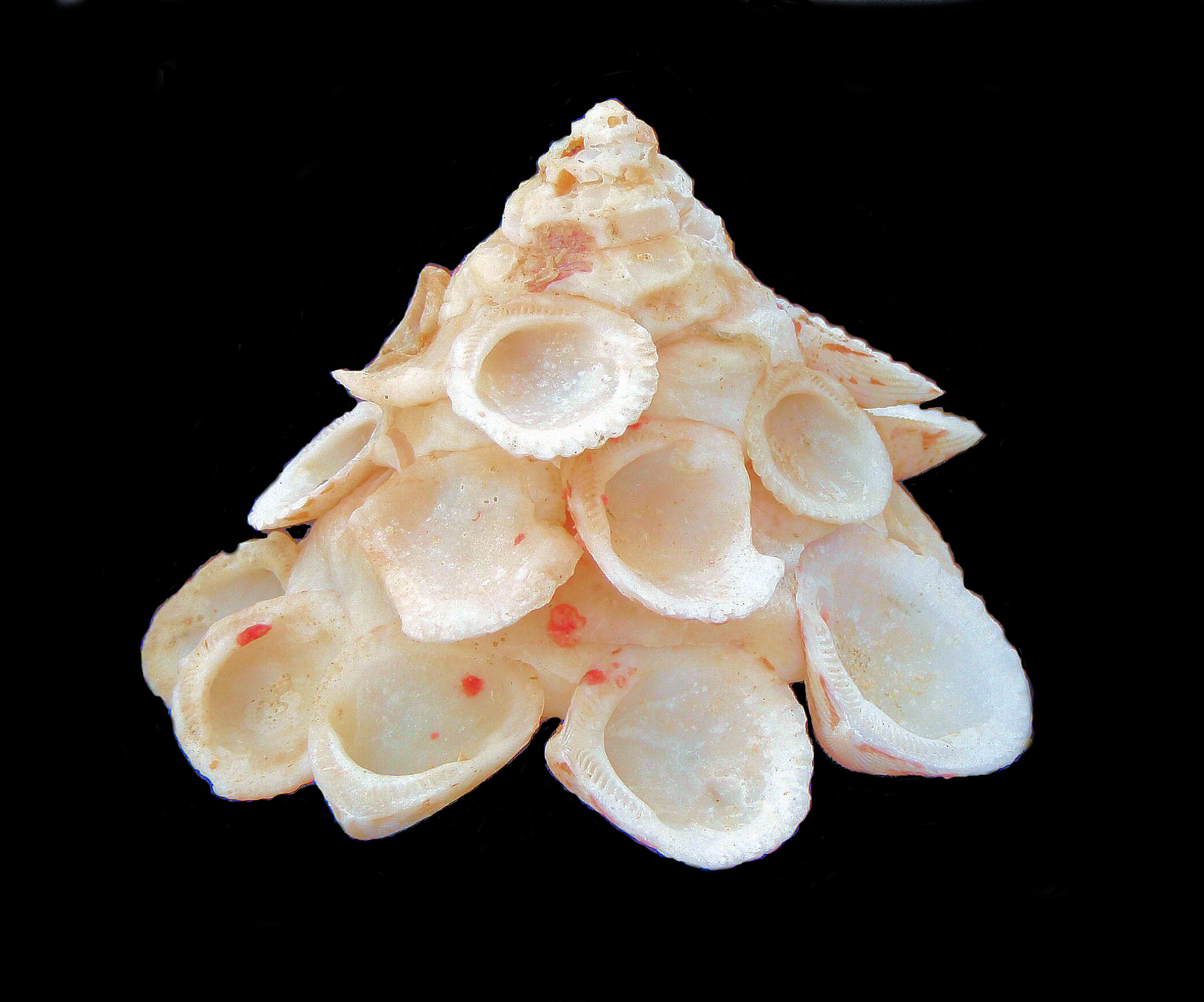 Robust Carrier Shell, Xenophora conchliophora robusta
Robust Carrier Shell, Xenophora conchliophora robusta
Carriers of the Xenophoridae Family are a gastropod mollusk that have some of the most interesting of shells, in terms of behavior. The Latin name Xenophoridae means “bearing foreigners”. This is a reference to their behavior of gluing other sea shells, small pebbles, or coral rubble to the outside of the growth whorl of their shell. As the shell grows, it accumulates additional shells. The end result is a shell that looks like a pile of debris. In some cases, the glued on shells exceed the weight of the Carrier Shell’s shell. There are few schools of thought as to why they do this. Some speculate that it is merely a form of camouflage. Some say it is to increase the difficulty a predator would have in attacking or swallowing the shell. Gluing on shells is more energy efficient than growing your own shell. Others speculate that it increases the basal surface area to facilitate staying on top of soft muck. Finally, aquarium observations indicate, at least for some species, that the animal uses the glued-on shells for cover while feeding as the animal keeps its head under the attached shells throughout the feeding process. This makes it more difficult for a predator to attack the otherwise exposed head.
Other forms of marine life, such as sponges, also find Carrier Shells to be convenient location to attach, adding to the load of foreign material. Some species in the Family only glue on a few small shells, leaving most of the shell surface exposed. With other species, the great majority of the shell is covered. Individual Carrier Shells tend to be covered with shells that are similar in size and shape i.e. all clams or all elongate snails. This could indicate either preference or availability. Attachment position does not appear to be random. Bivalves are always attached interior side up; gastropods are always aperture up. Selecting, cleaning, positioning, and attaching shells to yourself is not an easy process for an animal that has no hands or arms.
Carrier Shells can spend up to 90 minutes just selecting, cleaning and positioning the desired object. They use the anatomical structures of their head, their muscular foot, and the surrounding substrate to manipulate and hold the object in place. They secrete a cement from their mantle and use fine sand particles to fill in gaps. The animal may hold the object in place for up to ten hours while the cement cures. During this time, it occasionally shakes its body to ensure that the new attachment is firmly in place.
Carrier Shells have a wide cone shape, similar to Turban and Top Shells. They are much wider than high, sometimes with spines around their base whorl. The surface sculpting may be fine radial lines, wavy ridges, spines, or smooth and the base is marked with spiral lines. The periostracum is often thin or absent. Many species have an umbilicus in the center of their base. The aperture may be porcelaneous but not nacreous. The operculum is corneous (horn like). Carrier Shells reside within sand or mud substrate. They can be grazers, feeding on algal film, or deposit feeders, feeding on detritus laying on the substrate surface. Carrier Shells are found primarily in tropical seas. They may live in shallow water, though most are found deeper, at depths up to 1,400 m (4,600 feet). There are about two dozen species of Carrier Shells known globally. Only one is found in coastal waters of the Baja.